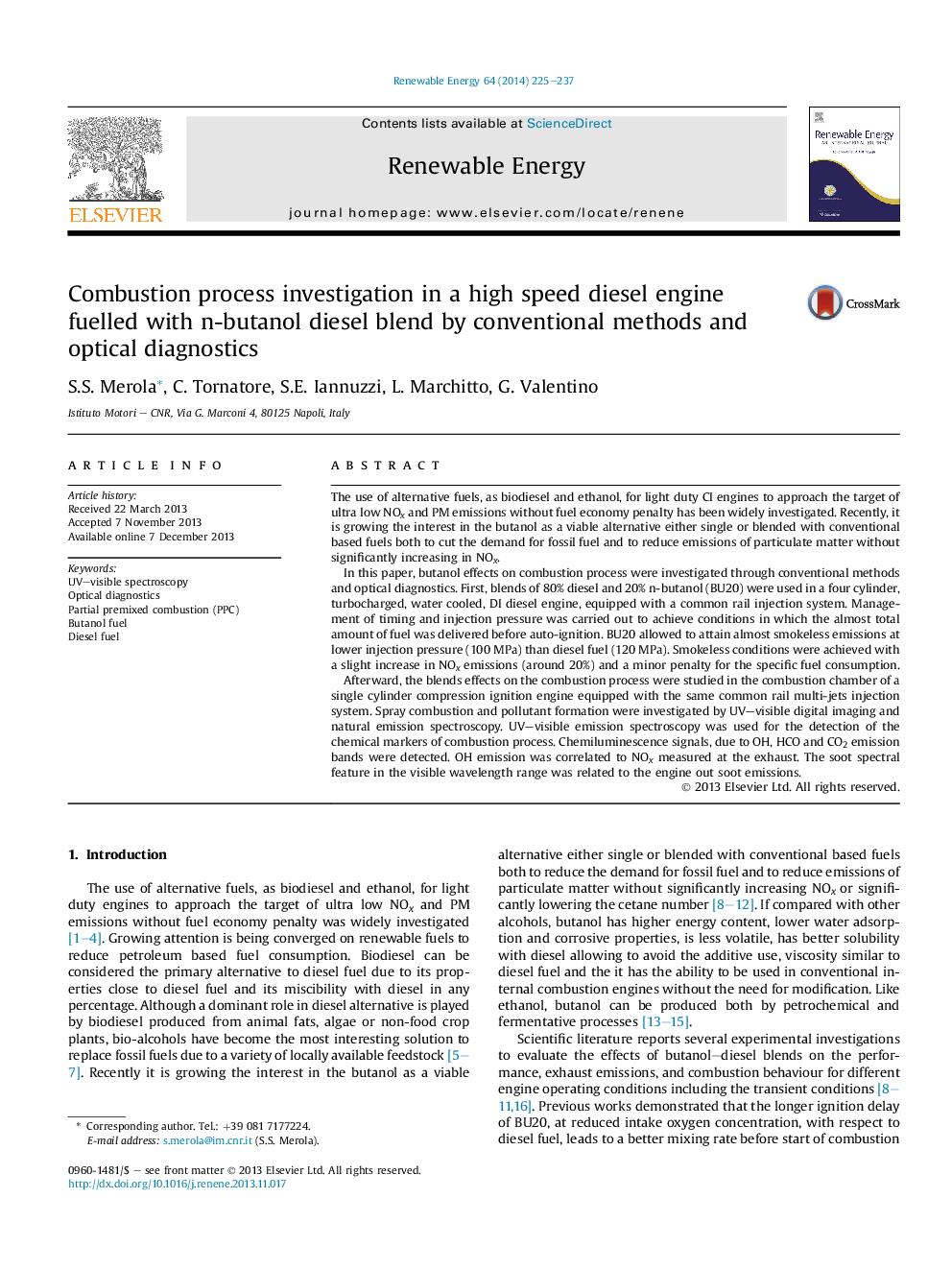| کد مقاله | کد نشریه | سال انتشار | مقاله انگلیسی | نسخه تمام متن |
|---|---|---|---|---|
| 300093 | 512469 | 2014 | 13 صفحه PDF | دانلود رایگان |
• Experimental investigations employing diesel fuel (BU00) and blend of 80% diesel-20% n-butanol (BU20) in C.I. engines.
• BU20 reduced exhaust emissions of NOx and soot without significant penalties on performance.
• Optical investigations showed that BU20 promoted faster formation and higher concentration of OH in the combustion chamber.
• This effect induced faster soot oxidation phase and produced a like-smokeless combustion in the early injection condition.
The use of alternative fuels, as biodiesel and ethanol, for light duty CI engines to approach the target of ultra low NOx and PM emissions without fuel economy penalty has been widely investigated. Recently, it is growing the interest in the butanol as a viable alternative either single or blended with conventional based fuels both to cut the demand for fossil fuel and to reduce emissions of particulate matter without significantly increasing in NOx.In this paper, butanol effects on combustion process were investigated through conventional methods and optical diagnostics. First, blends of 80% diesel and 20% n-butanol (BU20) were used in a four cylinder, turbocharged, water cooled, DI diesel engine, equipped with a common rail injection system. Management of timing and injection pressure was carried out to achieve conditions in which the almost total amount of fuel was delivered before auto-ignition. BU20 allowed to attain almost smokeless emissions at lower injection pressure (100 MPa) than diesel fuel (120 MPa). Smokeless conditions were achieved with a slight increase in NOx emissions (around 20%) and a minor penalty for the specific fuel consumption.Afterward, the blends effects on the combustion process were studied in the combustion chamber of a single cylinder compression ignition engine equipped with the same common rail multi-jets injection system. Spray combustion and pollutant formation were investigated by UV–visible digital imaging and natural emission spectroscopy. UV–visible emission spectroscopy was used for the detection of the chemical markers of combustion process. Chemiluminescence signals, due to OH, HCO and CO2 emission bands were detected. OH emission was correlated to NOx measured at the exhaust. The soot spectral feature in the visible wavelength range was related to the engine out soot emissions.
Journal: Renewable Energy - Volume 64, April 2014, Pages 225–237
